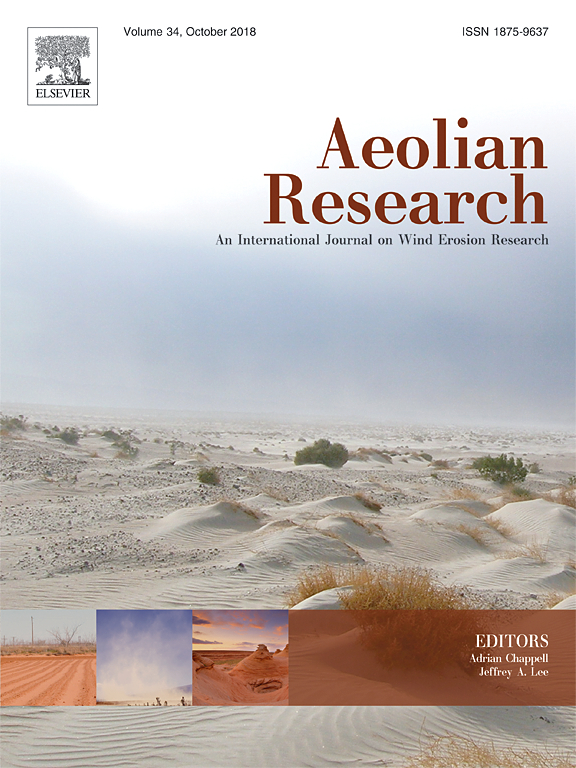Ver ítem
- xmlui.general.dspace_homeCentros Regionales y EEAsCentro Regional La Pampa - San LuisEEA AnguilArtículos científicosxmlui.ArtifactBrowser.ItemViewer.trail
- Inicio
- Centros Regionales y EEAs
- Centro Regional La Pampa - San Luis
- EEA Anguil
- Artículos científicos
- Ver ítem
Effects of low-scale landscape structures on aeolian transport processes on arable land
Resumen
The landscape of the semiarid Pampa in central Argentina is characterized by late Pleistocene aeolian deposits, covering large plains with sporadic dune structures. Since the current land use changed from extensive livestock production within the Caldenal forest ecosystem to arable land, the wind erosion risk increased distinctly. We measured wind erosion and deposition patterns at the plot scale and investigated the spatial variability of the erosion
[ver mas...]
The landscape of the semiarid Pampa in central Argentina is characterized by late Pleistocene aeolian deposits, covering large plains with sporadic dune structures. Since the current land use changed from extensive livestock production within the Caldenal forest ecosystem to arable land, the wind erosion risk increased distinctly. We measured wind erosion and deposition patterns at the plot scale and investigated the spatial variability of the erosion processes. The wind-induced mass-transport was measured with 18 Modified Wilson and Cooke samplers (MWAC), installed on a 1.44 ha large field in a 20 × 40 m grid. Physical and chemical soil properties from the upper soil as well as a digital elevation model were recorded in a 20 × 20 m grid. In a 5-month measuring campaign data from seven storms with three different wind directions was obtained. Results show very heterogeneous patterns of erosion and deposition for each storm and indicate favoured erosion on windward and deposits on leeward terrain positions. Furthermore, a multiple regression model was build, explaining up to 70% of the spatial variance of erosion by just using four predictors: topsoil thickness, relative elevation, soil organic carbon content and slope direction. Our findings suggest a structure-process-structure complex where the landscape structure determines the effects of recent wind erosion processes which again slowly influence the structure, leading to a gradual increase of soil heterogeneity.
[Cerrar]

Autor
Siegmund, Nicole;
Funk, Roger;
Koszinsky, Sylvia;
Buschiazzo, Daniel Eduardo;
Sommer, Michael;
Fuente
Aeolian research 32 : 181-191. (June 2018)
Fecha
2018-06
Editorial
Elsevier
ISSN
1875-9637
Formato
pdf
Tipo de documento
artículo
Palabras Claves
Derechos de acceso
Restringido
 Excepto donde se diga explicitamente, este item se publica bajo la siguiente descripción: Creative Commons Attribution-NonCommercial-ShareAlike 2.5 Unported (CC BY-NC-SA 2.5)
Excepto donde se diga explicitamente, este item se publica bajo la siguiente descripción: Creative Commons Attribution-NonCommercial-ShareAlike 2.5 Unported (CC BY-NC-SA 2.5)

